Related Research Articles

The Royal Institution of Great Britain is an organisation devoted to scientific education and research, based in the City of Westminster. It was founded in 1799 by the leading British scientists of the age, including Henry Cavendish and its first president, George Finch, the 9th Earl of Winchilsea. Its foundational principles were diffusing the knowledge of, and facilitating the general introduction of, useful mechanical inventions and improvements, as well as enhancing the application of science to the common purposes of life.

The Royal Society, formally The Royal Society of London for Improving Natural Knowledge, is a learned society and the United Kingdom's national academy of sciences. Founded on 28 November 1660, it was granted a royal charter by King Charles II as "The Royal Society". It is the oldest national scientific institution in the world. The society fulfils a number of roles: promoting science and its benefits, recognising excellence in science, supporting outstanding science, providing scientific advice for policy, fostering international and global co-operation, education and public engagement.

Derby Museum and Art Gallery was established in 1879 in Derby, England, along with Derby Central Library, in a new building designed by Richard Knill Freeman and given to Derby by Michael Thomas Bass. The collection includes a gallery displaying many paintings by Joseph Wright of Derby; there is also a large display of Royal Crown Derby and other porcelain from Derby and the surrounding area. Further displays include archaeology, natural history, geology, military collections and world cultures. The Art Gallery was opened in 1882.

Sir William Robert Grove, FRS FRSE was a Welsh judge and physical scientist. He anticipated the general theory of the conservation of energy, and was a pioneer of fuel cell technology. He invented the Grove voltaic cell.
The Manchester Literary and Philosophical Society, popularly known as the Lit & Phil, is a learned society in Manchester, England.
The Institution of Mechanical Engineers (IMechE) is an independent professional association and learned society headquartered in London, United Kingdom, that represents mechanical engineers and the engineering profession. With over 120,000 members in 140 countries, working across industries such as railways, automotive, aerospace, manufacturing, energy, biomedical and construction, the Institution is licensed by the Engineering Council to assess candidates for inclusion on its Register of Chartered Engineers, Incorporated Engineers and Engineering Technicians.
Edward William Brayley FRS was an English geographer, librarian, and science author.
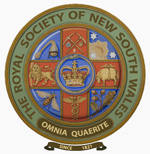
The Royal Society of New South Wales is a learned society based in Sydney, Australia. The Governor of New South Wales is the vice-regal patron of the Society.
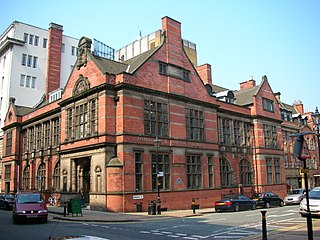
The Birmingham and Midland Institute (BMI), is an institution concerned with the promotion of education and learning in Birmingham, England. It is now based on Margaret Street in Birmingham city centre. It was founded in 1854 as a pioneer of adult scientific and technical education ; and today continues to offer arts and science lectures, exhibitions and concerts. It is a registered charity. There is limited free access to the public, with further facilities available on a subscription basis.
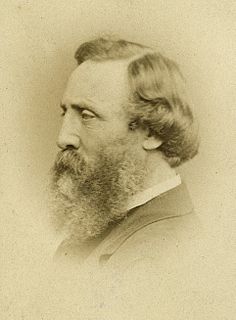
Abraham Follett Osler, known as A. Follett Osler, was a pioneer in the measurement of meteorological and chronological data in Birmingham, England.
Royal Cork Institution was an Irish cultural institution in the city of Cork from 1803 to 1885. It consisted of a library of scientific works, a museum with old Irish manuscripts and stones with ogham inscriptions, and lecture and reading rooms. A lack of funds resulted in its closure in 1885.

A subscription library is a library that is financed by private funds either from membership fees or endowments. Unlike a public library, access is often restricted to members, but access rights can also be given to non-members, such as students.

The Bath Royal Literary and Scientific Institution is an educational charity based in Bath, England. It was founded in 1824 and provides a museum, an independent library, exhibition space, meeting rooms and a programme of public lectures, discussion groups and exhibitions related to science, the arts and current affairs.

The London Institution was an educational institution founded in London in 1806. It preceded the University of London in making scientific education widely available in the capital to people such as the Dissenters who adhered to non-orthodox religious beliefs and were consequently barred from attending Oxford University or Cambridge University.
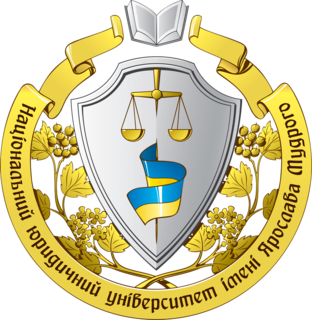
The Yaroslav Mudryi National Law University is a self-governing (autonomous) state higher law educational establishment of the IV level of accreditation, a national university, located in Kharkiv, Ukraine, named after Yaroslav the Wise.

The Mechanics' Institute, 103 Princess Street, Manchester, is notable as the building in which three significant British institutions were founded: the Trades Union Congress (TUC), the Co-operative Insurance Society (CIS) and the University of Manchester Institute of Science and Technology (UMIST). In the 1960s it was occupied by the Manchester College of Commerce. It has been a Grade II* listed building since 11 May 1972.

The Derby Exhibition of 1839 was the first exhibition in Derby. It was held at the town's Mechanics' Institute, which later became known as Albert Hall. The exhibition was in line with the founding values of the Institute, which were to extend the spread of knowledge among the people of Derby. The institute had organized a wide range of events since 1825, including lectures, concerts, and displays. The exhibition followed the first such organised by Manchester Mechanics Institute in 1837 and Derby's was one of several that were organised that year in English industrial towns and cities. Derby's exhibition had a profound impact and was one of the factors leading to the foundation of the Museum and Library in 1878. Derby Museum and Art Gallery, which is next door to what was the Mechanics Institute building, now holds many of the objects from the exhibition.
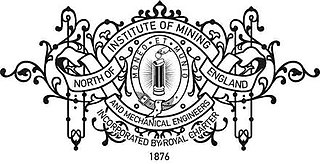
The North of England Institute of Mining and Mechanical Engineers (NEIMME), commonly known as The Mining Institute, is a British Royal Chartered learned society and membership organisation dedicated to advancing science and technology in the North and promoting the research and preservation of knowledge relating to mining and mechanical engineering. The membership of the Institute is elected on the basis of their academic and professional achievements with Members and Fellows entitled to the postnominal MNEIMME and FNEIMME. The Institutes’ membership is predominately from local industry and from academics at Durham and Newcastle Universities, though members are also located further afield across the UK.

The Russell Institution was an organisation devoted to scientific, literary and musical education, based in London. It was founded by private subscription in 1808, taking as models the Royal Institution and the London Institution, both at the time popular.

The Sydney Mechanics' School of Arts (SMSA) is the longest running School of Arts and the oldest continuous lending library in Australia.
References
- ↑ Blakiston, Peyton (1837). A Lecture on the Diffusion of Scientific Knowledge in Large Towns: delivered to the members of Birmingham Philosophical Institute, 1837.
- ↑ Inkster, Ian. History of Technology, Volume 31. p. 125.